
- •Warning and Disclaimer
- •Feedback Information
- •Trademark Acknowledgments
- •About the Author
- •About the Technical Reviewers
- •Dedication
- •Acknowledgments
- •Contents at a Glance
- •Contents
- •Icons Used in This Book
- •Command Syntax Conventions
- •Cisco’s Motivation: Certifying Partners
- •Format of the CCNA Exams
- •What’s on the CCNA Exams
- •ICND Exam Topics
- •Cross-Reference Between Exam Topics and Book Parts
- •CCNA Exam Topics
- •INTRO and ICND Course Outlines
- •Objectives and Methods
- •Book Features
- •How This Book Is Organized
- •Part I: LAN Switching
- •Part II: TCP/IP
- •Part III: Wide-Area Networks
- •Part IV: Network Security
- •Part V: Final Preparation
- •Part VI: Appendixes
- •How to Use These Books to Prepare for the CCNA Exam
- •For More Information
- •Part I: LAN Switching
- •“Do I Know This Already?” Quiz
- •Foundation Topics
- •Brief Review of LAN Switching
- •The Forward-Versus-Filter Decision
- •How Switches Learn MAC Addresses
- •Forwarding Unknown Unicasts and Broadcasts
- •LAN Switch Logic Summary
- •Basic Switch Operation
- •Foundation Summary
- •Spanning Tree Protocol
- •“Do I Know This Already?” Quiz
- •Foundation Topics
- •Spanning Tree Protocol
- •What IEEE 802.1d Spanning Tree Does
- •How Spanning Tree Works
- •Electing the Root and Discovering Root Ports and Designated Ports
- •Reacting to Changes in the Network
- •Spanning Tree Protocol Summary
- •Optional STP Features
- •EtherChannel
- •PortFast
- •Rapid Spanning Tree (IEEE 802.1w)
- •RSTP Link and Edge Types
- •RSTP Port States
- •RSTP Port Roles
- •RSTP Convergence
- •Edge-Type Behavior and PortFast
- •Link-Type Shared
- •Link-Type Point-to-Point
- •An Example of Speedy RSTP Convergence
- •Basic STP show Commands
- •Changing STP Port Costs and Bridge Priority
- •Foundation Summary
- •Foundation Summary
- •Virtual LANs and Trunking
- •“Do I Know This Already?” Quiz
- •Foundation Topics
- •Review of Virtual LAN Concepts
- •Trunking with ISL and 802.1Q
- •ISL and 802.1Q Compared
- •VLAN Trunking Protocol (VTP)
- •How VTP Works
- •VTP Pruning
- •Foundation Summary
- •Part II: TCP/IP
- •IP Addressing and Subnetting
- •“Do I Know This Already?” Quiz
- •Foundation Topics
- •IP Addressing Review
- •IP Subnetting
- •Analyzing and Interpreting IP Addresses and Subnets
- •Math Operations Used to Answer Subnetting Questions
- •Converting IP Addresses from Decimal to Binary and Back Again
- •The Boolean AND Operation
- •How Many Hosts and How Many Subnets?
- •What Is the Subnet Number, and What Are the IP Addresses in the Subnet?
- •Finding the Subnet Number
- •Finding the Subnet Broadcast Address
- •Finding the Range of Valid IP Addresses in a Subnet
- •Finding the Answers Without Using Binary
- •Easier Math with Easy Masks
- •Which Subnet Masks Meet the Stated Design Requirements?
- •What Are the Other Subnet Numbers?
- •Foundation Summary
- •“Do I Know This Already?” Quiz
- •Foundation Topics
- •Extended ping Command
- •Distance Vector Concepts
- •Distance Vector Loop-Avoidance Features
- •Route Poisoning
- •Split Horizon
- •Split Horizon with Poison Reverse
- •Hold-Down Timer
- •Triggered (Flash) Updates
- •RIP and IGRP
- •IGRP Metrics
- •Examination of RIP and IGRP debug and show Commands
- •Issues When Multiple Routes to the Same Subnet Exist
- •Administrative Distance
- •Foundation Summary
- •“Do I Know This Already?” Quiz
- •Foundation Topics
- •Link-State Routing Protocol and OSPF Concepts
- •Steady-State Operation
- •Loop Avoidance
- •Scaling OSPF Through Hierarchical Design
- •OSPF Areas
- •Stub Areas
- •Summary: Comparing Link-State and OSPF to Distance Vector Protocols
- •Balanced Hybrid Routing Protocol and EIGRP Concepts
- •EIGRP Loop Avoidance
- •EIGRP Summary
- •Foundation Summary
- •“Do I Know This Already?” Quiz
- •Foundation Topics
- •Route Summarization and Variable-Length Subnet Masks
- •Route Summarization Concepts
- •VLSM
- •Route Summarization Strategies
- •Sample “Best” Summary on Seville
- •Sample “Best” Summary on Yosemite
- •Classless Routing Protocols and Classless Routing
- •Classless and Classful Routing Protocols
- •Autosummarization
- •Classful and Classless Routing
- •Default Routes
- •Classless Routing
- •Foundation Summary
- •Advanced TCP/IP Topics
- •“Do I Know This Already?” Quiz
- •Foundation Topics
- •Scaling the IP Address Space for the Internet
- •CIDR
- •Private Addressing
- •Network Address Translation
- •Static NAT
- •Dynamic NAT
- •Overloading NAT with Port Address Translation (PAT)
- •Translating Overlapping Addresses
- •Miscellaneous TCP/IP Topics
- •Internet Control Message Protocol (ICMP)
- •ICMP Echo Request and Echo Reply
- •Destination Unreachable ICMP Message
- •Time Exceeded ICMP Message
- •Redirect ICMP Message
- •Secondary IP Addressing
- •FTP and TFTP
- •TFTP
- •MTU and Fragmentation
- •Foundation Summary
- •Part III: Wide-Area Networks
- •“Do I Know This Already?” Quiz
- •Foundation Topics
- •Review of WAN Basics
- •Physical Components of Point-to-Point Leased Lines
- •Data-Link Protocols for Point-to-Point Leased Lines
- •HDLC and PPP Compared
- •Looped Link Detection
- •Enhanced Error Detection
- •Authentication Over WAN Links
- •PAP and CHAP Authentication
- •Foundation Summary
- •“Do I Know This Already?” Quiz
- •Foundation Topics
- •ISDN Protocols and Design
- •Typical Uses of ISDN
- •ISDN Channels
- •ISDN Protocols
- •ISDN BRI Function Groups and Reference Points
- •ISDN PRI Function Groups and Reference Points
- •BRI and PRI Encoding and Framing
- •PRI Encoding
- •PRI Framing
- •BRI Framing and Encoding
- •DDR Step 1: Routing Packets Out the Interface to Be Dialed
- •DDR Step 2: Determining the Subset of the Packets That Trigger the Dialing Process
- •DDR Step 3: Dialing (Signaling)
- •DDR Step 4: Determining When the Connection Is Terminated
- •ISDN and DDR show and debug Commands
- •Multilink PPP
- •Foundation Summary
- •Frame Relay
- •“Do I Know This Already?” Quiz
- •Foundation Topics
- •Frame Relay Protocols
- •Frame Relay Standards
- •Virtual Circuits
- •LMI and Encapsulation Types
- •DLCI Addressing Details
- •Network Layer Concerns with Frame Relay
- •Layer 3 Addressing with Frame Relay
- •Frame Relay Layer 3 Addressing: One Subnet Containing All Frame Relay DTEs
- •Frame Relay Layer 3 Addressing: One Subnet Per VC
- •Frame Relay Layer 3 Addressing: Hybrid Approach
- •Broadcast Handling
- •Frame Relay Service Interworking
- •A Fully-Meshed Network with One IP Subnet
- •Frame Relay Address Mapping
- •A Partially-Meshed Network with One IP Subnet Per VC
- •A Partially-Meshed Network with Some Fully-Meshed Parts
- •Foundation Summary
- •Part IV: Network Security
- •IP Access Control List Security
- •“Do I Know This Already?” Quiz
- •Foundation Topics
- •Standard IP Access Control Lists
- •IP Standard ACL Concepts
- •Wildcard Masks
- •Standard IP ACL: Example 2
- •Extended IP Access Control Lists
- •Extended IP ACL Concepts
- •Extended IP Access Lists: Example 1
- •Extended IP Access Lists: Example 2
- •Miscellaneous ACL Topics
- •Named IP Access Lists
- •Controlling Telnet Access with ACLs
- •ACL Implementation Considerations
- •Foundation Summary
- •Part V: Final Preparation
- •Final Preparation
- •Suggestions for Final Preparation
- •Preparing for the Exam Experience
- •Final Lab Scenarios
- •Scenario 1
- •Scenario 1, Part A: Planning
- •Solutions to Scenario 1, Part A: Planning
- •Scenario 2
- •Scenario 2, Part A: Planning
- •Solutions to Scenario 2, Part A: Planning
- •Part VI: Appendixes
- •Glossary
- •Answers to the “Do I Know This Already?” Quizzes and Q&A Questions
- •Chapter 1
- •“Do I Know This Already?” Quiz
- •Chapter 2
- •“Do I Know This Already?” Quiz
- •Chapter 3
- •“Do I Know This Already?” Quiz
- •Chapter 4
- •“Do I Know This Already?” Quiz
- •Chapter 5
- •“Do I Know This Already?” Quiz
- •Chapter 6
- •“Do I Know This Already?” Quiz
- •Chapter 7
- •“Do I Know This Already?” Quiz
- •Chapter 8
- •“Do I Know This Already?” Quiz
- •Chapter 9
- •“Do I Know This Already?” Quiz
- •Chapter 10
- •“Do I Know This Already?” Quiz
- •Chapter 11
- •“Do I Know This Already?” Quiz
- •Chapter 12
- •“Do I Know This Already?” Quiz
- •Using the Simulation Software for the Hands-on Exercises
- •Accessing NetSim from the CD
- •Hands-on Exercises Available with NetSim
- •Scenarios
- •Labs
- •Listing of the Hands-on Exercises
- •How You Should Proceed with NetSim
- •Considerations When Using NetSim
- •Routing Protocol Overview
- •Comparing and Contrasting IP Routing Protocols
- •Routing Through the Internet with the Border Gateway Protocol
- •RIP Version 2
- •The Integrated IS-IS Link State Routing Protocol
- •Summary of Interior Routing Protocols
- •Numbering Ports (Interfaces)
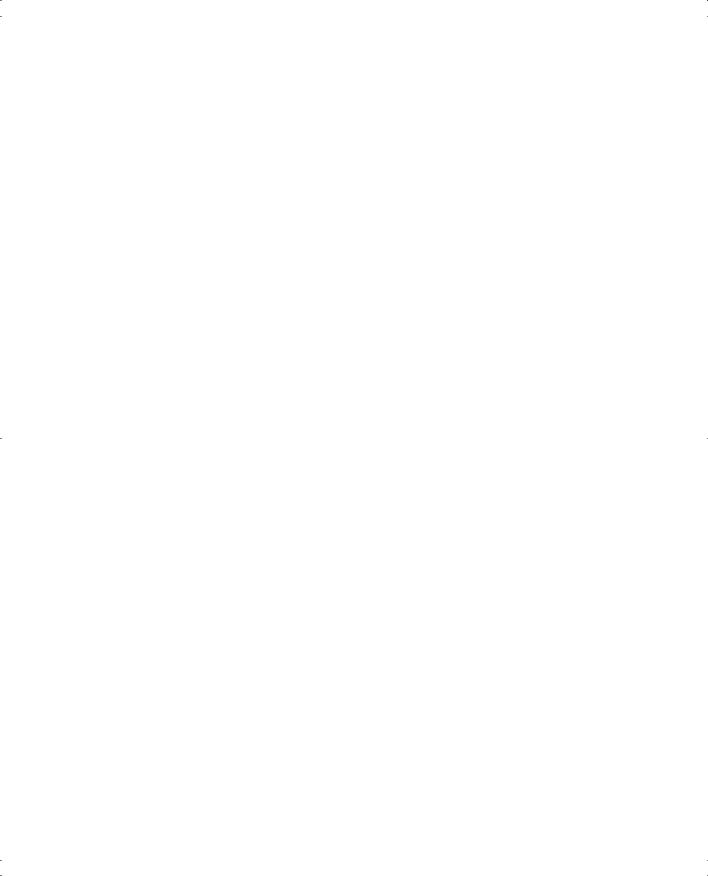
Analyzing and Interpreting IP Addresses and Subnets 111
The resulting 32-bit number is the subnet number in which 150.150.2.1 resides. All you have to do is convert the 32-bit number back to decimal 8 bits at a time. The subnet number in this case is 150.150.2.0.
If you understand the basic idea but would like additional examples to make it more clear, read on. In the next section, you will use Boolean ANDs to answer basic questions about IP subnetting. Also, on the CD, look for the chapter titled “Subnetting Practice: 25 Subnetting Questions.” It offers 25 IP addressing practice questions, each with the binary math worked out for performing the Boolean AND.
Prefix Notation
Any Cisco-oriented IP addressing coverage would be incomplete without a discussion of prefix notation.
In this chapter, you will get more and more comfortable using subnet masks. They can be written in decimal form or as a 32-bit binary number. However, a third alternative called prefix notation allows a router to display mask information more succinctly.
To understand prefix notation, it is important to know that all subnet masks have some number of consecutive binary 1s, followed by binary 0s. In other words, a subnet mask cannot have 1s and 0s interspersed throughout the mask. The mask always has some number of binary 1s, followed only by binary 0s.
Prefix notation simply denotes the number of binary 1s in a mask, preceded by a /. In other words, for subnet mask 255.255.255.0, whose binary equivalent is 11111111 11111111 11111111 00000000, the equivalent prefix notation is /24, because there are 24 consecutive binary 1s in the mask. When talking about subnets, you can say things like “That subnet uses a slash 24 prefix” or “That subnet has a 24-bit prefix” instead of saying something like “That subnet uses a mask of 255.255.255.0.”
Prefix notation makes talking about subnet masks a little easier, and it makes the information displayed by the router a little briefer as well. For instance, just try saying “255.255.255.0” a few times, and imagine the network is down while you’re saying it, and you’ll hear the benefit.
Now that the basic math tools have been covered, the specifics of how to use them to find the right answers to subnetting questions are covered next.
How Many Hosts and How Many Subnets?
You should also know how to figure out how many network, subnet, and host bits are used with that subnetting scheme. From those facts, you can easily figure out how many hosts exist in the subnet and how many subnets you can create in that network using that subnet mask.
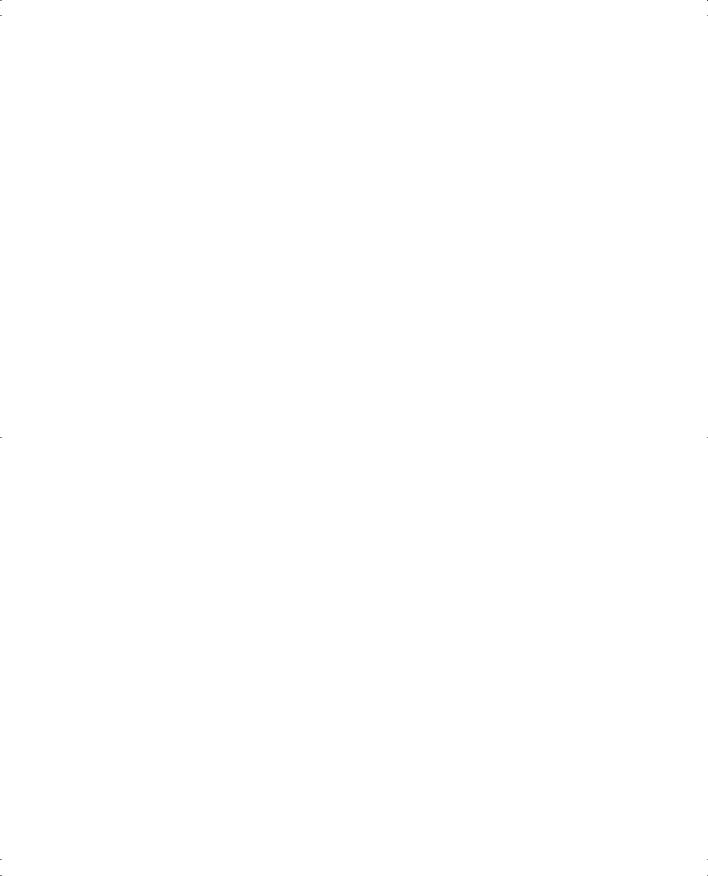
112 Chapter 4: IP Addressing and Subnetting
You have already learned that Class A, B, and C networks have 8, 16, or 24 bits in their network fields, respectively. Those rules do not change. You’ve also read that, without subnetting, Class A, B, and C addresses have 24, 16, or 8 bits in their host fields, respectively. With subnetting, the network part of the address does not shrink or change, but the host field shrinks to make room for the subnet field. So the key to answering these types of questions is to figure out how many host bits remain after subnetting. Then you can tell the size of the subnet field. The rest of the answers follow from those two facts.
The following facts tell you how to find the sizes of the network, subnet, and host parts of an IP address:
The network part of the address is always defined by class rules.
The host part of the address is always defined by the mask. Binary 0s in the mask mean that the corresponding address bits are part of the host field.
The subnet part of the address is what’s left over in the 32-bit address.
Table 4-6 lists these three key facts along with the first example. If you have forgotten the ranges of values in the first octet for addresses in Class A, B, and C networks, refer to Table 4-2.
Table 4-6 First Example, with Rules for Learning the Network, Subnet, and Host Part Sizes
Step |
Example |
Rules to Remember |
|
|
|
Address |
8.1.4.5 |
— |
|
|
|
Mask |
255.255.0.0 |
— |
|
|
|
Number of Network Bits |
8 |
Always defined by Class A, B, C |
|
|
|
Number of Host Bits |
16 |
Always defined as the number of binary 0s in |
|
|
the mask |
|
|
|
Number of Subnet Bits |
8 |
32 – (network size + host size) |
|
|
|
This example has 8 network bits because the address is in a Class A network, 8.0.0.0. There are 16 host bits because when you convert 255.255.0.0 to binary, there are 16 binary 0s— the last 16 bits in the mask. (If you don’t believe me, look at the binary-to-decimal conversion chart in Appendix B. 255 decimal is eight binary 1s, and 0 decimal is eight binary 0s.) The size of the subnet part of the address is what’s left over, or 8 bits.
Two other examples with easy-to-convert masks might help your understanding. Consider address 130.4.102.1 with mask 255.255.255.0. First, 130.4.102.1 is in a Class B network, so there are 16 network bits. A subnet mask of 255.255.255.0 has only eight binary 0s, implying 8 host bits, which leaves 8 subnet bits in this case.
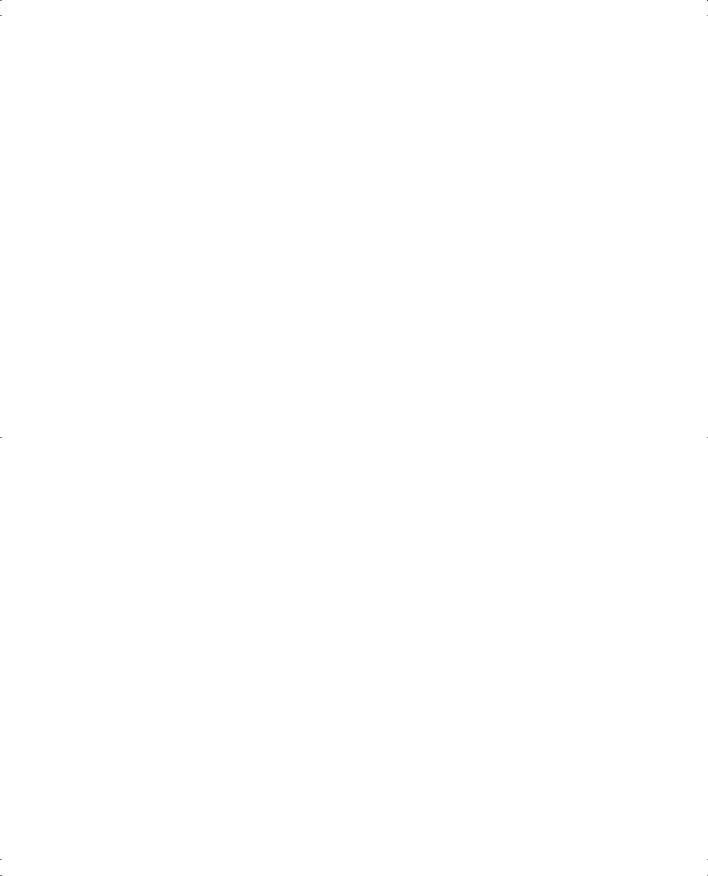
Analyzing and Interpreting IP Addresses and Subnets 113
As another example, consider 199.1.1.100 with mask 255.255.255.0. This example doesn’t even use subnetting! 199.1.1.100 is in a Class C network, which means that there are 24 network bits. The mask has eight binary 0s, yielding 8 host bits, with no bits remaining for the subnet part of the address. In fact, if you remembered that the default mask for Class C networks is 255.255.255.0, you might have already realized that no subnetting was being used in this example.
You probably can calculate the number of host bits easily if the mask uses only decimal 255s and 0s, because it is easy to remember that decimal 255 represents eight binary 1s and decimal 0 represents eight binary 0s. So, for every decimal 0 in the mask, there are 8 host bits. However, when the mask uses decimal values besides 0 and 255, deciphering the number of host bits is more difficult. Examining the subnet masks in binary helps overcome the challenge. Consider the addresses and masks, along with the binary versions of the masks, shown in Table 4-7.
Table 4-7 Two Examples Using More-Challenging Masks
Mask in Decimal |
Mask in Binary |
|
|
130.4.102.1, mask 255.255.252.0 |
1111 1111 1111 1111 1111 1100 0000 0000 |
|
|
199.1.1.100, mask 255.255.255.224 |
1111 1111 1111 1111 1111 1111 1110 0000 |
|
|
The number of host bits implied by a mask becomes more apparent after you convert the mask to binary. The first mask, 255.255.252.0, has ten binary 0s, implying a 10-bit host field. Because that mask is used with a Class B address (130.4.102.1), implying 16 network bits, there are 6 remaining subnet bits. In the second example, the mask has only five binary 0s, for 5 host bits. Because the mask is used with a Class C address, there are 24 network bits, leaving only 3 subnet bits. The process so far is straightforward:
■The class rules define the network part.
■The mask binary 0s define the host part.
■What’s left over defines the size of the subnet part.
The only big problem occurs when the mask is tricky, which is true in the last two examples. When the mask is tricky, you have two alternatives for deciding how many host bits are defined:
Convert the mask to binary using any method of conversion, and count the number of 0s.
Convert the mask to binary after memorizing the nine decimal and binary values shown in Table 4-8. These are the only nine valid decimal values used in a subnet mask. Converting a mask to binary without having to convert from decimal to binary is much faster.
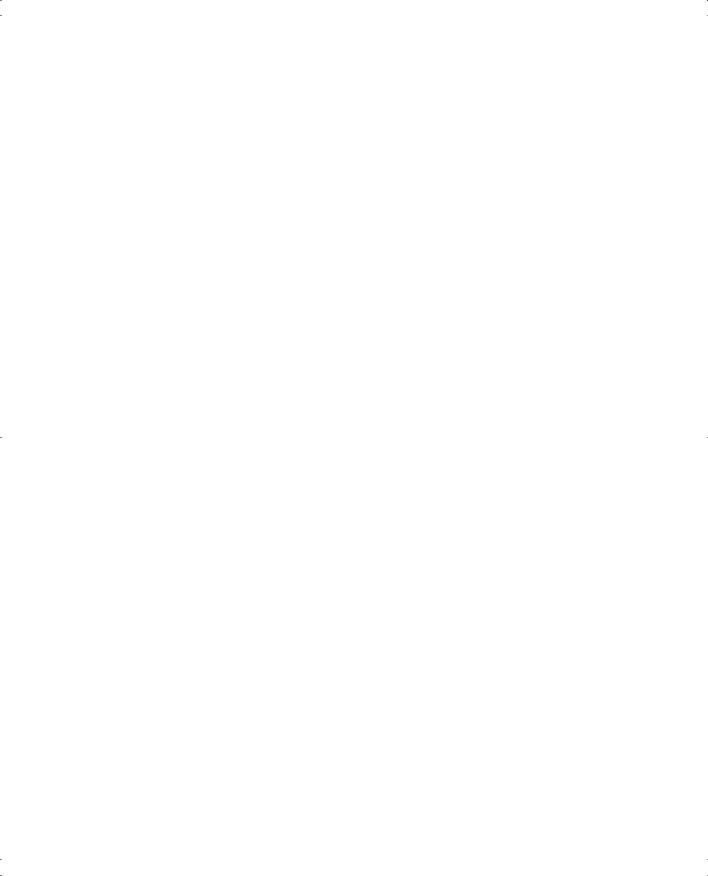
114 Chapter 4: IP Addressing and Subnetting
Table 4-8 lists the only valid decimal values in a mask and their binary equivalents. Memorizing these values will help you convert masks between their decimal and binary forms more quickly on the exam.
Table 4-8 Decimal and Binary Values in a Single Octet of a Valid Subnet Mask
Decimal |
Binary |
|
|
0 |
0000 0000 |
|
|
128 |
1000 0000 |
|
|
192 |
1100 0000 |
|
|
224 |
1110 0000 |
|
|
240 |
1111 0000 |
|
|
248 |
1111 1000 |
|
|
252 |
1111 1100 |
|
|
254 |
1111 1110 |
|
|
255 |
1111 1111 |
|
|
Binary conversion of a subnet mask without the use of a calculator, PC, or decimal-to-binary conversion chart becomes easy after you memorize this chart. The binary equivalents of 255 and decimal 0 are obvious. The other seven values are not! But notice the values in succession: Each value has an additional binary 1 and one less binary 0. Each successive mask value reduces the number of host bits by 1 and adds 1 to the size of the subnet field. If you simply memorize each decimal value and its binary equivalent, converting masks from decimal to binary will be a breeze. In fact, you could sit down to take the exam, and before starting, go ahead and write down the information in the table so you could easily refer to it during the exam.
This book has not yet told you how to answer questions like this:
Given an address and mask, how many subnets are there? And how many hosts are there in a single subnet?
Two simple formulas provide the answers. They are based on the information you just learned how to derive:
Number of subnets = 2number-of-subnet-bits – 2
Number of hosts per subnet = 2number-of-host-bits – 2
These formulas calculate the number of things that can be numbered using a binary number and then subtract 2 for two special cases. IP addressing conventions define that two subnets per network not be used and that two hosts per subnet not be used.
One reserved subnet, the subnet that has all binary 0s in the subnet field, is called the zero subnet. The subnet with all binary 1s in the subnet field is called the broadcast subnet—and
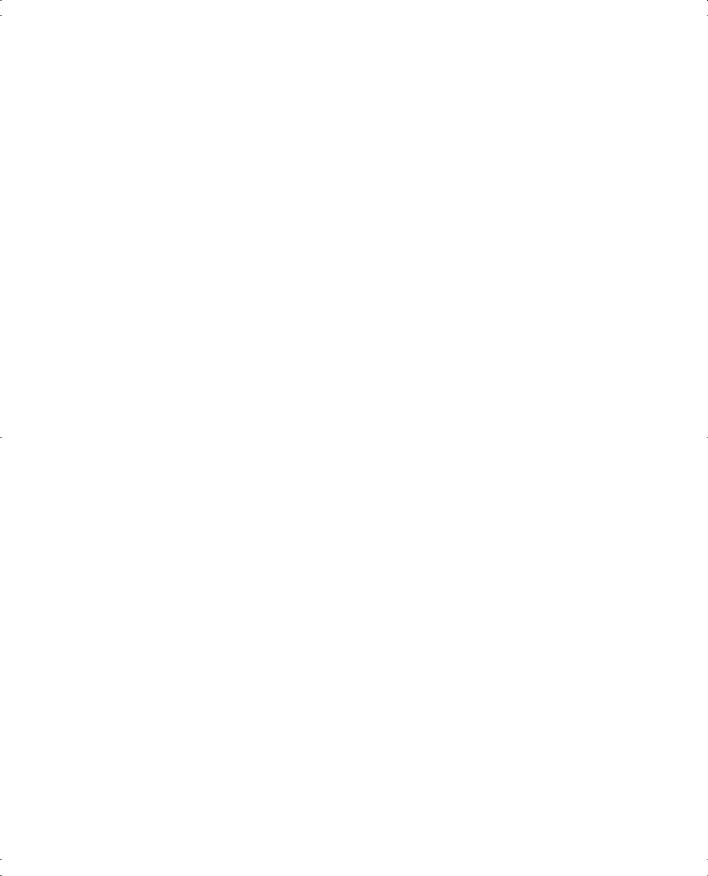
Analyzing and Interpreting IP Addresses and Subnets 115
it also is reserved. (In fact, you can use both these subnets on a Cisco router, but it is
recommended that you avoid using them. On the exam, the “right” answer is that you do not use them—hence the “minus 2” part of the 2number-of-subnet-bits – 2 formula.) Actually,
the courses upon which CCNA is based now use the term “discouraged” instead of “reserved,” meaning that although these two subnets can be used, you should avoid it.
IP addressing conventions also reserve two IP addresses per subnet: the first (all binary 0s in the host field) and last (all binary 1s in the host field) addresses. No tricks exist to make these two addresses usable—they are indeed always reserved.
Table 4-9 summarizes the five examples used so far in this chapter.
Table 4-9 Five Examples of Addresses/Masks, with the Number of Network, Subnet, and Host Bits
Address |
8.1.4.5/16 |
130.4.102.1/24 |
199.1.1.100/24 |
130.4.102.1/22 |
199.1.1.100/27 |
|
|
|
|
|
|
Mask |
255.255.0.0 |
255.255.255.0 |
255.255.255.0 |
255.255.252.0 |
255.255.255.224 |
|
|
|
|
|
|
Number of |
8 |
16 |
24 |
16 |
24 |
Network |
|
|
|
|
|
Bits |
|
|
|
|
|
|
|
|
|
|
|
Number of |
16 |
8 |
8 |
10 |
5 |
Host Bits |
|
|
|
|
|
|
|
|
|
|
|
Number of |
8 |
8 |
0 |
6 |
3 |
Subnet Bits |
|
|
|
|
|
|
|
|
|
|
|
Number of |
216 – 2, or 65,534 |
28 – 2, or 254 |
28 – 2, or 254 |
210 – 2, or 1022 |
25 – 2, or 30 |
Hosts Per |
|
|
|
|
|
Subnet |
|
|
|
|
|
|
|
|
|
|
|
Number of |
28 – 2, or 254 |
28 – 2, or 254 |
0 |
26 – 2, or 62 |
23 – 2, or 6 |
Subnets |
|
|
|
|
|
|
|
|
|
|
|
The details of the algorithm used to answer subnetting questions about the number of hosts and subnets are summarized in the following list:
Step 1 Identify the structure of the IP address.
Step 2 Identify the size of the network part of the address based on Class A, B, and C rules.
Step 3 Identify the size of the host part of the address based on the number of binary 0s in the mask. If the mask is tricky, use the chart of typical mask values to convert the mask to binary more quickly.
Step 4 The size of the subnet part is what’s “left over”; mathematically, it is 32
– (number of network + host bits).
